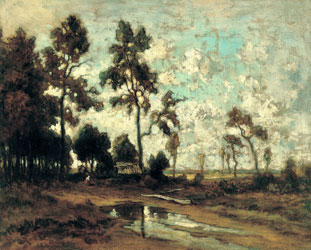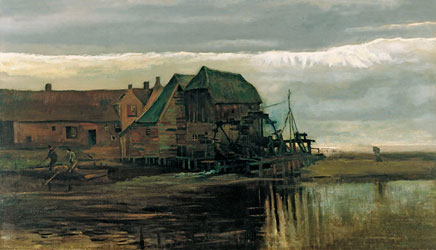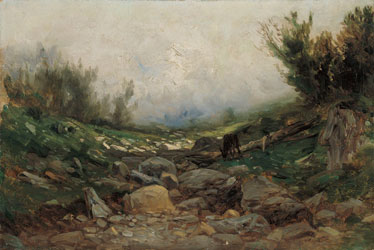- 01. Naturalism
- 02. From Post-Romanticism to Symbolism
- 03. The impressionist Gaze
- 04. The new Classicisms
- 05. Avant-gardes
Courbet, Van Gogh, Monet, Léger.
From naturalist Landscape to the
Avant-gardes in the Carmen
Thyssen-Bornemisza Collection
4 October 2013 - 20 April 2014
The Colliers' Hut in the Forest of Fontainebleau
ca. 1855 Oil on canvas, 34.2 x 42.1 cm © Carmen Thyssen-Bornemisza Collection on deposit at Museo Thyssen-Bornemisza, Madrid

Naturalism
The exhibition opens with naturalist landscape characteristic of the second decade of the 19th century when the first examples of modern landscape painting were created. Artists began to paint en plein air, a practice that would become one of the basic tenets of Impressionism, while also starting to give greater importance to pure landscape. The most notable of the Spanish artists in this respect was Ramon Martí i Alsina, a Catalan landscape painter who was responsible for the definitive shift in the evolution of landscape painting due to the ideas he had assimilated in the various periods he spent in Paris where he saw the work of Théodore Rousseau -the principal figure of the Barbizon School- and probably also of Gustave Courbet, both of whom are represented in this exhibition. Another notable presence is Vincent van Gogh, whose early work includes landscapes that reveal his interest in rural life, with clear echoes of 17th-century Dutch painting and an evident influence of the Barbizon School.

